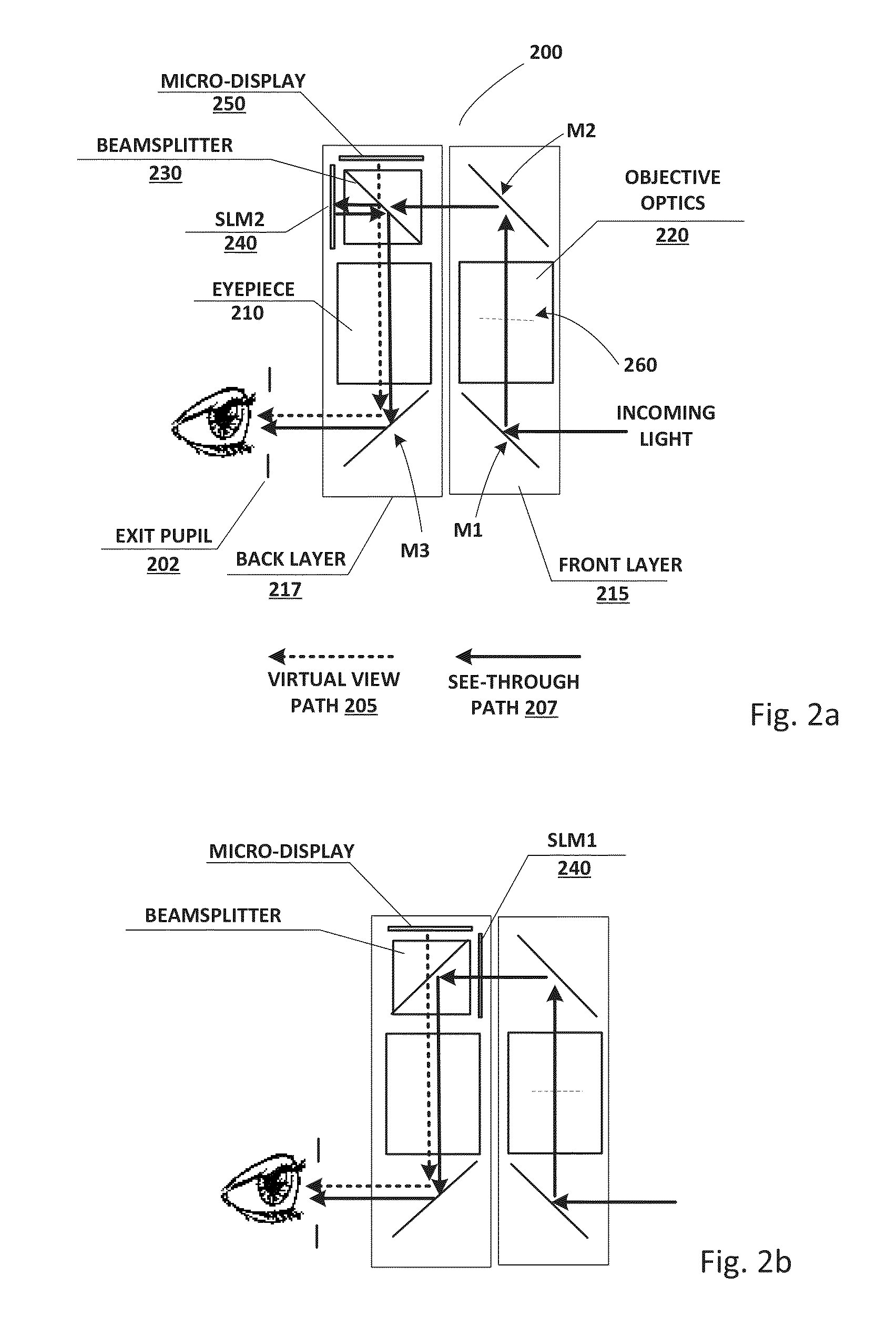Apparatus for optical see-through head mounted display with mutual occlusion and opaqueness control capability
a technology of optical see-through and head-mounted displays, which is applied in the direction of panoramic photography, magnifying glasses, instruments, etc., can solve the problems of loss of see-through view, image lag, and degradation of the image quality of the see-through view, and achieve the effect of reducing the offset of the viewpoin
- Summary
- Abstract
- Description
- Claims
- Application Information
AI Technical Summary
Benefits of technology
Problems solved by technology
Method used
Image
Examples
Embodiment Construction
[0037]The embodiments according to the present invention will be fully described with respect to the attached drawings. The descriptions are set forth in order to provide an understanding of the invention. However, it will be apparent that the invention can be practiced without these details. Furthermore, the present invention may be implemented in various forms. However, the embodiments of the present invention described below shall not be constructed as limited to the embodiments set forth herein. Rather, these embodiments, drawings and examples are illustrative and are meant to avoid obscuring the invention.
[0038]An occlusion capable optical see-through head-mounted display (OCOST-HMD) system typically comprises of a virtual view path for viewing a displayed virtual image and a see-through path for viewing an external scene in the real world. Hereafter the virtual image observed through the virtual view path is referred to as the virtual view and the external scene observed throu...
PUM
 Login to View More
Login to View More Abstract
Description
Claims
Application Information
 Login to View More
Login to View More - R&D
- Intellectual Property
- Life Sciences
- Materials
- Tech Scout
- Unparalleled Data Quality
- Higher Quality Content
- 60% Fewer Hallucinations
Browse by: Latest US Patents, China's latest patents, Technical Efficacy Thesaurus, Application Domain, Technology Topic, Popular Technical Reports.
© 2025 PatSnap. All rights reserved.Legal|Privacy policy|Modern Slavery Act Transparency Statement|Sitemap|About US| Contact US: help@patsnap.com



